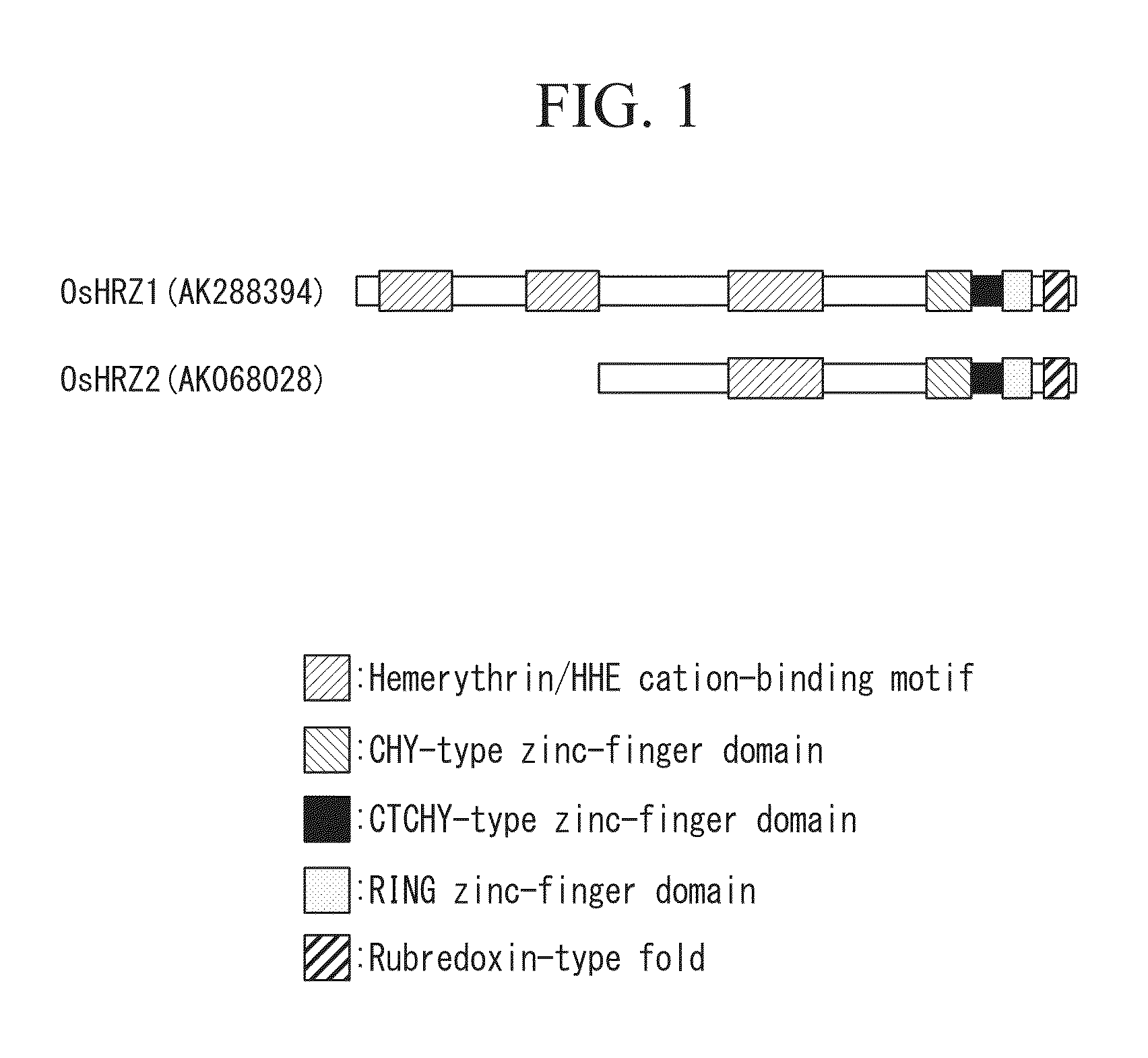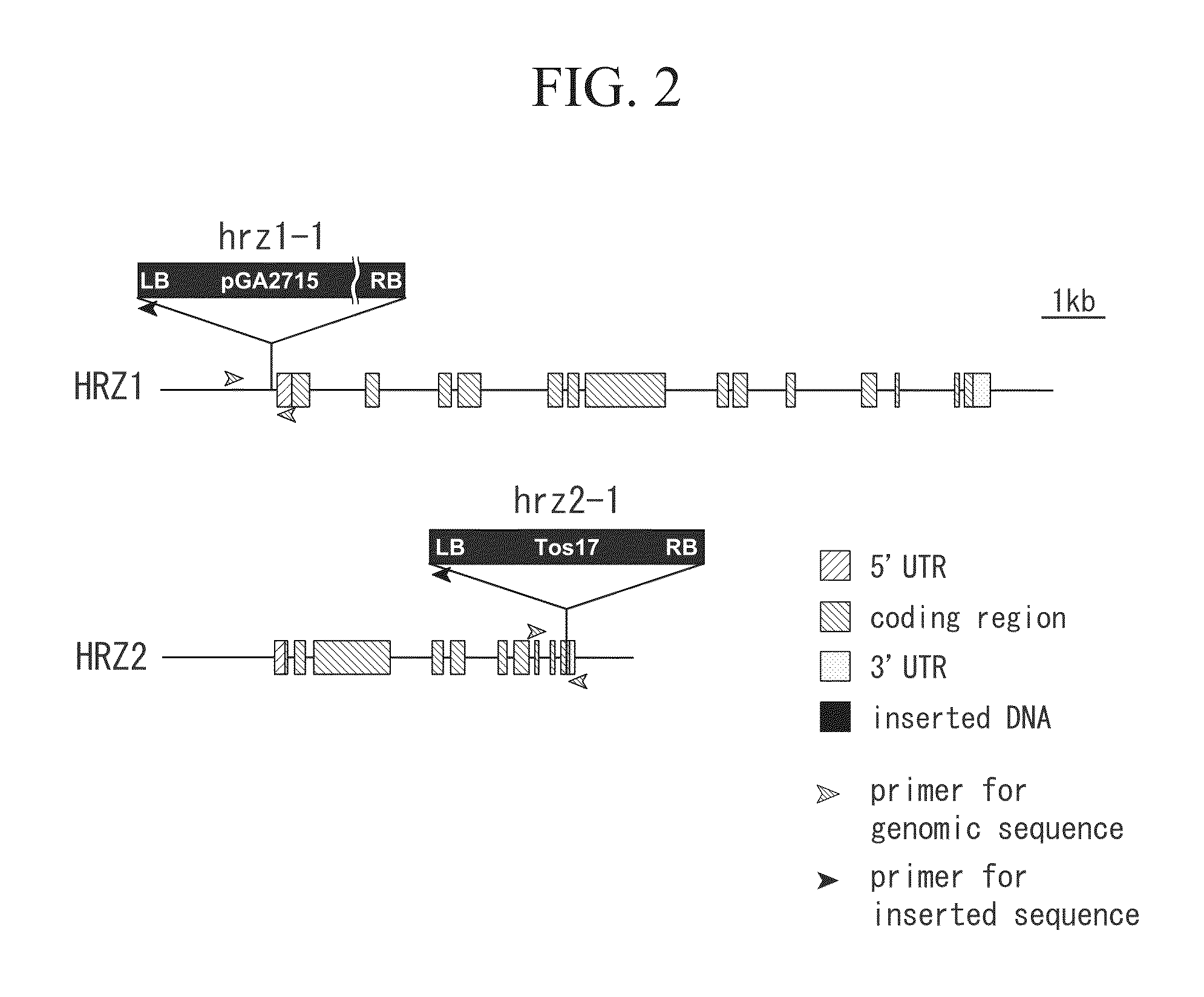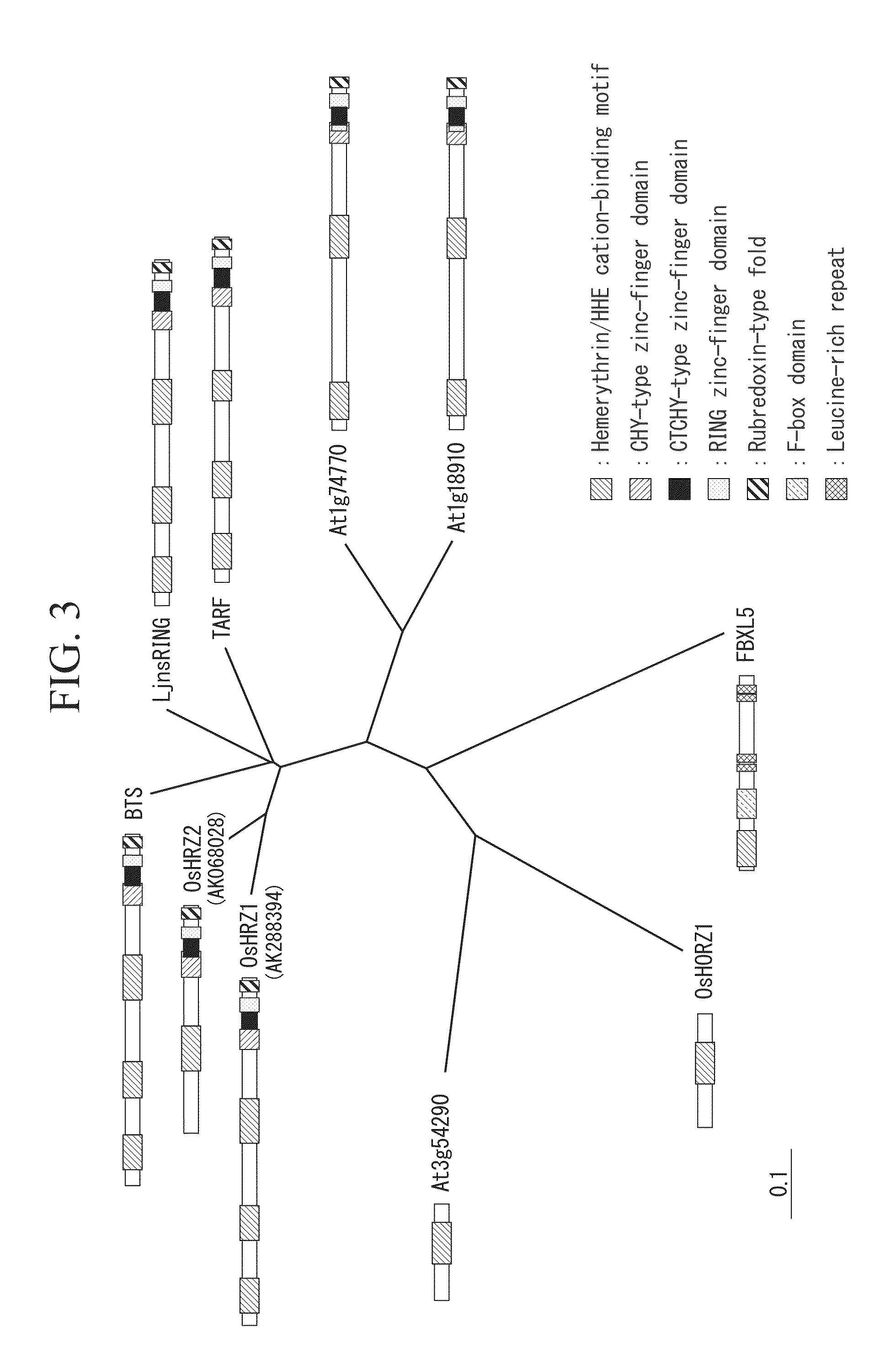Iron-zinc binding control factor, and technique for improving iron deficiency tolerance of plant and enhancing iron and zinc accumulation in edible part thereof by controlling expression of novel iron-zinc binding control factor
a technology of iron-zinc binding control and control factor, which is applied in the direction of immunoglobulins against plants, peptide sources, biochemistry apparatus and processes, etc., can solve the problems of iron deficiency being a principal limitation factor and the amount of solubilized iron in the plant is extremely low, so as to improve the growth rate and alleviate the symptoms of human iron and zinc deficiency disorders
- Summary
- Abstract
- Description
- Claims
- Application Information
AI Technical Summary
Benefits of technology
Problems solved by technology
Method used
Image
Examples
first embodiment
[0153]The method of the present embodiment for breeding a plant with improved iron deficiency tolerance and iron and zinc accumulation includes a step for detecting the protein of the present invention contained in an extract from the plant.
[0154]In order to discriminate whether or not expression of the protein of the present invention is suppressed in a plant body, the method of the present embodiment for breeding a plant with improved iron deficiency tolerance and iron and zinc accumulation may include a step for detecting the protein of the present invention. Based on the presence or absence of expression of the protein of the present invention, screening is conducted for plants that have iron deficiency tolerance, and iron and zinc accumulation in an edible part thereof.
[0155]As stated above, the protein of the present invention suppresses expression of the genes that have important functions when a plant acquires iron from soil. Therefore, a plant in which expression of the afo...
second embodiment
[0161]The plant breeding method of the present embodiment includes a step for detecting the gene of the present invention contained in an extract from a plant.
[0162]With respect to the step for detecting the gene of the present invention contained in an extract from the aforementioned plant, it is preferable to include a step in which an oligonucleotide including a fragment of the gene of the present invention or a complementary sequence thereof is incubated with an extract from the aforementioned plant, and it is more preferable to include a step in which an extract from the plant is hybridized with genomic DNA, mRNA, or cDNA pertaining to mRNA that is derived from the target plant.
[0163]By detecting a target gene that is hybridized using the breeding method of the present embodiment, it is possible to easily detect a plant body in which expression of the gene of the present invention is suppressed.
[0164]Furthermore, as stated above, the protein of the present invention has an impo...
working examples
[0170]Next, the present invention is described in greater detail with reference to working examples, but the present invention is not limited by the following working examples.
[0171](Identification of Rice-Derived, Novel Iron-Binding Proteins)
[0172]The present inventors conducted an analysis of iron deficiency induced gene clusters using microarray (Ogo, Y. et. al., J. Exp. Bot. (2006) vol. 57, pp. 2867-2878). Among these gene clusters, attention was focused on one candidate gene AK068028 (NCBI accession number: SEQ ID NO:4) as an iron sensor. As stated above, this gene includes a region that encodes the putative hemerythrin (also known as HHE) domain (see FIG. 1). The hemerythrin domain is preserved in invertebrates, bacteria, and mammals, and is known to bind with ferrous iron and molecular oxygen.
[0173]In invertebrates, proteins having a hemerythrin domain function as oxygen-transport proteins.
[0174]On the other hand, in humans, FBXL5 protein is known as a protein that has a heme...
PUM
| Property | Measurement | Unit |
|---|---|---|
| pH | aaaaa | aaaaa |
| distance | aaaaa | aaaaa |
| pressure | aaaaa | aaaaa |
Abstract
Description
Claims
Application Information
 Login to View More
Login to View More - R&D
- Intellectual Property
- Life Sciences
- Materials
- Tech Scout
- Unparalleled Data Quality
- Higher Quality Content
- 60% Fewer Hallucinations
Browse by: Latest US Patents, China's latest patents, Technical Efficacy Thesaurus, Application Domain, Technology Topic, Popular Technical Reports.
© 2025 PatSnap. All rights reserved.Legal|Privacy policy|Modern Slavery Act Transparency Statement|Sitemap|About US| Contact US: help@patsnap.com



